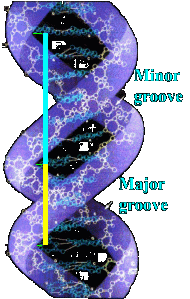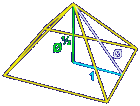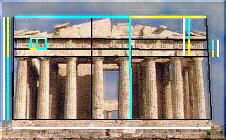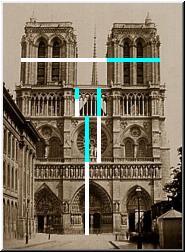Phi (
![]() = 1.618033988749895...
), most often
pronounced fi like "fly,"
is simply an irrational number like
pi ( p
= 3.14159265358979... ), but one with many unusual
mathematical properties. Unlike pi,
which is a transcendental number, phi is the solution to a
quadratic equation.
= 1.618033988749895...
), most often
pronounced fi like "fly,"
is simply an irrational number like
pi ( p
= 3.14159265358979... ), but one with many unusual
mathematical properties. Unlike pi,
which is a transcendental number, phi is the solution to a
quadratic equation.
Phi is the basis for the Golden Section, Ratio or Mean
The ratio, or proportion, determined by Phi (1.618 ...) was known to the Greeks as the "dividing a line in the extreme and mean ratio" and to Renaissance artists as the "Divine Proportion" It is also called the Golden Section, Golden Ratio and the Golden Mean.
 Phi,
like Pi, is a ratio defined by a geometric construction
Phi,
like Pi, is a ratio defined by a geometric construction
Just as pi (p)
is the ratio of the circumference of a
circle to its diameter, phi (![]() )
is simply the ratio of the line segments that result when
a
line is divided in one very special and
unique way.
)
is simply the ratio of the line segments that result when
a
line is divided in one very special and
unique way.
Divide a line so that:

the ratio of the
length of the entire line (A)
to the length of larger
line segment (B)
is the same as
the ratio of
the length of the larger line
segment (B)
to the length of the smaller
line segment (C).
This happens only at the point where:
A is 1.618 ... times B and B is 1.618 ... times C.
Alternatively, C is 0.618... of B and B is 0.618... of A.
Phi with an upper case "P" is 1.618 0339 887 ..., while phi with a lower case "p" is 0.6180339887, the reciprocal of Phi and also Phi minus 1.
|
|
|

 In
the 12th century, Leonardo Fibonacci discovered
a simple numerical series that is the foundation
for an incredible mathematical relationship
behind phi.
In
the 12th century, Leonardo Fibonacci discovered
a simple numerical series that is the foundation
for an incredible mathematical relationship
behind phi.


